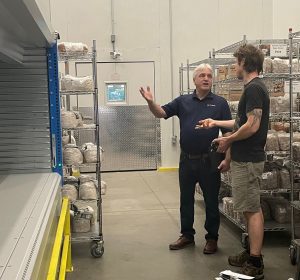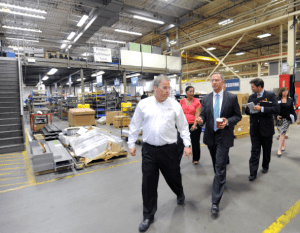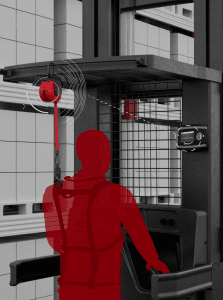Why In-Person Visits Still Matter in Material Handling Sales
In today’s world of Zoom and Teams meetings, it’s easy to assume that in-person interactions are becoming less important. Virtual meetings have advantages—convenience, speed, and the ability to connect across distances—but when it comes to material handling and forklift sales, nothing beats the impact of a face-to-face meeting, especially when visiting a customer’s warehouse.
As a material handling salesperson, I’ve seen firsthand how valuable these visits can be. Here’s why face-to-face meetings still hold a key advantage in the material handling industry.
the material handling industry.
Understanding the Customer’s Environment
When selling forklifts or other material handling equipment, it’s crucial to understand the physical environment in which the equipment will be used. Every warehouse is different. The layout, aisle widths, storage methods, floor conditions, and even the height of racking systems can vary drastically.
Visiting a customer’s facility allows me to walk the floor, see the operation in real-time, and gather insights that a virtual meeting could never provide. I can assess how the current fleet is performing, observe any operational challenges, and better understand the overall workflow. This deeper level of understanding translates into better recommendations and customized solutions tailored to each business’s unique needs.
Building Trust and Relationships
Material handling equipment is a significant investment, and trust plays a huge role in the decision-making process. While video calls can help build rapport, there’s something about meeting in person that fosters a stronger, more personal connection. When I visit a customer, I’m not just a face on a screen; I’m there to shake hands, answer questions, and discuss solutions face-to-face.
Being present shows the customer that their business matters to me and that I’m invested in helping them find the right solutions for their operations. This personal touch often leads to long-term relationships built on mutual trust and understanding. It’s much harder to establish this through digital meetings.
Hands-on Demonstrations and Real-Time Feedback
Forklifts and other material handling equipment are best understood when experienced in action. When I visit a warehouse, I can bring a demo forklift or walk through the benefits of specific features in a real-world context. Customers can see the equipment in operation, understand its capabilities, and ask questions on the spot.
Moreover, during these in-person interactions, customers can offer immediate feedback. If there’s a specific concern or operational need, I can address it on the fly. This level of real-time interaction is difficult to replicate through video calls, where everything is limited to verbal descriptions and screen-sharing.
Sometimes, it’s not about the equipment the customer asks for but what they might need in the future. Walking through a warehouse often uncovers hidden opportunities for improvement, whether optimizing racking configurations, streamlining picking operations, or suggesting fleet management and telematic software.
As a salesperson, my role goes beyond simply providing equipment; I help customers improve their overall operations and efficiency. Seeing how they operate firsthand allows me to proactively offer innovative solutions that can increase productivity, reduce downtime, and enhance safety.
Safety is a top priority in any warehouse environment, and forklifts are no exception. During an in-person visit, I can review current safety practices and offer recommendations to improve the safety of the material handling operations. One recent advancement that is being well received for ‘man up operations’ is Raymond’s Integrated Tether System.
It’s one thing to discuss safety protocols over a video call. Still, it’s another thing to walk through a facility and identify potential hazards that might be overlooked in conversation. In-person visits provide a more comprehensive understanding of a warehouse’s safety challenges, allowing for better solutions.
Building a Better Sales Proposal
A well-crafted proposal goes beyond numbers and product descriptions. It reflects the customer’s specific needs, considering their operational challenges, growth plans, and budget constraints. I can gather all the relevant information by visiting the customer’s site, ensuring that my proposal addresses their exact needs.
When customers see that a salesperson has taken the time to understand their operations, they’re more likely to feel confident in the offered solution. That confidence can make all the difference when it comes to closing a deal.
The Human Element Still Wins
In an industry where machines and technology play a significant role, it’s easy to forget the human element. However, forklifts are not just about moving pallets but about helping businesses succeed. And as a salesperson, my job is to ensure that the equipment I provide genuinely adds value to the customer’s operations.
Virtual meetings may be convenient, but they can’t replace the insights, relationships, and value of an in-person visit. When I step into a customer’s warehouse, I’m not just selling forklifts—I’m offering tailored solutions that fit their specific needs, and that’s something you can’t fully achieve over a video call.
In the material handling world, face-to-face interactions are not just important—they’re invaluable.





Leave a Reply
You must be logged in to post a comment.